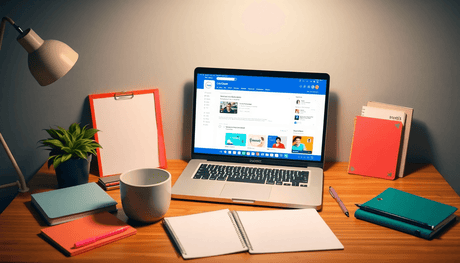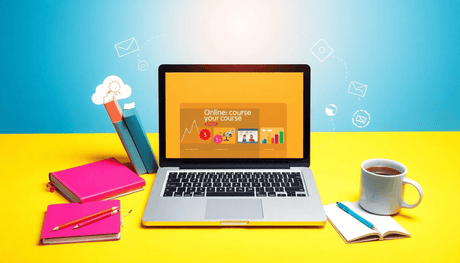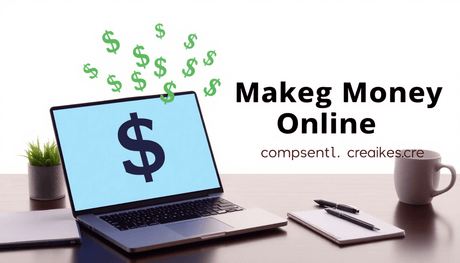Creating cohesive learning paths is essential for delivering educational experiences that engage learners and promote skill mastery. A well-structured learning path guides students through content in a logical, progressive manner, enhancing retention and satisfaction.
Using multiple PLR sources to build these paths offers a strategic advantage. For instance, combining Private Label Rights courses from different creators such as Joseph Delgadillo, Maiza Nara, and Bilal Khan lets you assemble diverse, comprehensive content that covers various angles of a subject. This approach saves time while expanding the breadth and depth of your offerings.
This guide targets entrepreneurs, educators, and content creators looking to leverage PLR courses effectively. You’ll discover practical tips for selecting complementary materials, structuring content seamlessly, customizing for your audience, and maintaining consistent branding. By applying these insights, you can transform disparate PLR products into unified, high-value learning experiences that stand out in the market.
For more information about using PLR courses effectively or if you have any queries regarding this process, feel free to check our FAQ page.
Understanding PLR Content and Its Potential
Private Label Rights (PLR) licenses grant you access to pre-made educational materials that you can modify, brand, and resell as your own. PLR courses provide a powerful shortcut for entrepreneurs, educators, and content creators looking to build or expand their learning offerings without starting from scratch.
Key advantages of using high-quality PLR video courses include:
- Time savings: Ready-made video lessons reduce content development time drastically.
- Professional production: Many PLR providers, such as Uthena, deliver polished courses with clear audio, engaging visuals, and structured curricula.
- Whitelabel options: Platforms like Uthena allow full rebranding of courses so you can present them under your unique brand identity.
Customization is critical to unlock the true value of PLR content. Simply repurposing videos or materials as-is may result in a generic experience that lacks connection with your audience. You want to tailor the content to your specific niche, teaching style, and learner needs. This might involve:
- Modifying scripts or presentation slides
- Adding personal insights or examples
- Adjusting the course structure for better flow
- Incorporating your branding elements consistently
- Editing a PLR template effectively
Customizable content turns standard PLR assets into distinctive products that reflect your expertise and resonate with learners. This approach ensures you deliver value beyond what competitors offering generic versions can provide.
Exploring the Diverse Range of PLR Courses on Uthena
At Uthena, you'll find a wide array of PLR video courses available for purchase. These courses span various subjects including finance, where you can discover everything from personal finance to cryptocurrency through Uthena's extensive collection of finance courses.
Moreover, Uthena also offers hobby courses which can be another great addition to your learning offerings.
In addition to these resources, individuals like Arbaz Khan, a Computer Science Engineer specializing in IoT, AI, and Python programming, are providing innovative tech solutions and automation projects through the platform.
Selecting Complementary PLR Products for a Unified Learning Experience
Creating a cohesive learning path from multiple PLR sources hinges on the careful selection of complementary materials that blend seamlessly to offer learners a unified and comprehensive experience. Here are some essential points to consider:
1. Identifying Related Skills or Topics
Seek out PLR materials that cover different but related skills or topics. For instance, if you're developing a course on digital marketing, you could combine modules on social media marketing, SEO strategies, and content creation to provide a well-rounded learning experience. You can explore various PLR Bundles that offer multiple courses from the same instructor at incredible prices.
2. Ensuring Relevance and Breadth
It's vital to guarantee that the combined content offers relevance and breadth to cater to the diverse needs of your learners. By selecting materials that complement each other, you can provide comprehensive coverage of the subject matter and maintain audience engagement throughout the learning journey.
3. Leveraging Expertise from Diverse Instructors
To enhance the learning experience further, consider incorporating insights from various instructors who specialize in different areas. For example, you might want to include content from Lambros Lazopoulos, a medical student and self-taught filmmaker with hands-on experience in content creation, or Ramsai Dupati, an expert in Linux and CyberSecurity.
By strategically choosing complementary PLR products that align with your learning objectives and seamlessly integrate with each other, you can create a cohesive and engaging educational experience for your audience. If you're interested in becoming an instructor yourself, you can find more information about applying as an instructor on Uthena's website.
Structuring the Learning Path for Logical Flow and Engagement
When creating a learning path using multiple PLR (Private Label Rights) sources, it's important to structure the content in a way that promotes logical flow and keeps learners engaged. Here are some tips for organizing your selected PLR content and creating cohesive learning paths:
1. Organize Content into Modules or Sections
Break down your PLR content into modules or sections that cover specific topics or skills. Each module should build upon the previous one, creating a progressive learning experience. This organization allows learners to easily navigate through the material and understand how each piece fits into the bigger picture.
For example, if you're creating a course on digital marketing, you might organize your content as follows:
- Module 1: Introduction to Digital Marketing
- Module 2: Search Engine Optimization (SEO) Basics
- Module 3: Social Media Marketing Strategies
- Module 4: Email Marketing Best Practices
- Module 5: Analytics and Measurement in Digital Marketing
2. Create Smooth Transitions Between Different Sources
When using multiple PLR sources, it's crucial to ensure smooth transitions between different pieces of content. This helps maintain learner engagement and prevents any abrupt shifts that could disrupt the learning experience.
Here are some techniques for creating seamless transitions:
- Use bridging statements: When moving from one source to another, include bridging statements that connect the two topics or concepts. For example, "Now that we understand the importance of SEO, let's dive into specific strategies for optimizing our website."
- Highlight common themes: Identify common themes or ideas that run across different PLR sources. Emphasize these connections during transitions to reinforce understanding and create continuity.
- Incorporate real-life examples: Share real-life examples or case studies that illustrate how the concepts being taught in different sources are applied in practice. This not only makes the transition smoother but also enhances learner interest.
By implementing these strategies, you can create a well-structured learning path that flows logically from one topic to another while keeping learners engaged throughout their journey.
Adding Unique Value to Bridge Content Gaps
When integrating multiple PLR sources into your course, it is crucial to bridge any content gaps to provide a seamless learning experience for your audience. By identifying areas where the existing materials may fall short or lack depth, you can inject unique insights and personalization to elevate the overall quality of your course.
1. Enhancing Existing Materials
- Conduct a thorough review of the PLR content to pinpoint any deficiencies or topics that require further elaboration.
- Utilize your expertise to fill these gaps by adding detailed explanations, real-world examples, or practical applications that resonate with your target audience.
- Consider supplementing the existing content with external resources such as case studies, industry reports, or expert interviews to offer a well-rounded perspective on the subject matter.
2. Setting Yourself Apart
- Infuse your course with personal anecdotes, success stories, or unique insights that showcase your individual perspective and add value for learners.
- Incorporate relevant case studies or research findings that demonstrate practical applications of the concepts being taught.
- By customizing the content to align with your voice and expertise, you can establish a distinct identity for your course and differentiate it from generic offerings in the market.
Consistent Rebranding for Professionalism and Recognition
Rebranding PLR content is essential to stand out and build trust with your audience. Applying a uniform tone of voice across all course materials creates a seamless learning experience. Whether the content includes video scripts, PDFs, or quizzes, maintaining the same style and language ensures learners feel they are engaging with a single, coherent brand rather than a patchwork of unrelated sources.
The visual identity plays an equally important role in branding consistency. Use consistent elements such as:
- Logos that reflect your brand’s personality
- A defined set of fonts for headings, body text, and captions
- A harmonious color scheme that aligns with your brand guidelines
These visual cues reinforce recognition and professionalism. When learners see the same branding across all modules, it increases their confidence in the course quality.
Rebranding PLR content also involves customizing graphics and thumbnails to match your unique style. Avoid default or generic images that come with PLR packs; instead, design visuals that resonate with your target audience while supporting your overall brand message. You can explore various options for creating such customized graphics by checking out some design courses.
Consistent rebranding ensures that even though you source content from multiple PLR providers, your learning path feels like a cohesive product crafted specifically by you. This approach strengthens learner engagement and sets a strong foundation for building long-term credibility.
Repurposing Content Formats to Suit Diverse Learning Styles
When creating cohesive learning paths from multiple PLR sources, format transformation plays a crucial role in engaging a broad audience. You can extend beyond traditional video or text lessons by developing multimedia learning materials tailored to different learner preferences.
Consider these approaches:
- Interactive quizzes: Reinforce knowledge and provide immediate feedback, enhancing retention.
- Downloadable resources: Worksheets, checklists, and cheat sheets offer practical tools learners can use offline.
- Live webinars with guest experts: Facilitate real-time interaction and deepen understanding through Q&A sessions.
Incorporate a mix of visual, auditory, and kinesthetic elements to accommodate varied learning styles. Visual learners benefit from infographics and slide decks, auditory learners engage more with podcasts or narrated content, while kinesthetic learners thrive when given hands-on activities or simulations.
This diversified content delivery not only keeps learners interested but also strengthens the overall educational experience by addressing individual needs. Skillfully repurposing your PLR content into different formats ensures your course feels dynamic and personalized without starting from scratch.
To further enhance the learning experience, consider integrating AI courses into your curriculum. These courses offer expert-led training that can significantly boost skills and advance careers.
Navigating Licensing Terms and Legal Compliance with Ease
Understanding PLR licensing terms is critical before customizing or reselling any PLR content. Different PLR licenses grant different rights, so you must know exactly what you can and cannot do to avoid legal compliance issues.
Key points to focus on:
- Usage Rights: Some licenses allow you to edit, rebrand, and sell the content as your own, while others restrict modifications or resale. For instance, platforms like Uthena offer whitelabel courses with clearly outlined rights simplifying compliance.
- Distribution Limits: Check if there are restrictions on where and how many times you can distribute the material.
- Exclusivity: Most PLR products are non-exclusive, meaning other users may have access to the same content. Recognizing this helps you plan how to differentiate your offering.
- Attribution Requirements: Some licenses require giving credit to the original creator; others allow complete anonymity.
When working with platforms like Uthena that offer whitelabel courses, these rights are often clearly outlined, simplifying compliance. However, always read license agreements carefully. Ignoring details can result in copyright infringement or penalties.
In addition to PLR content, it's also important to understand licensing terms for other digital products such as those offered by Canva. Familiarizing yourself with these Canva digital products licensing can provide further insights into legal compliance when using such resources.
Maintaining a checklist of licensing terms for every PLR product you use ensures you stay within legal boundaries while confidently customizing your learning paths. This practice protects your business and upholds professional integrity.
If you're looking for a source of PLR content that offers extensive customization options, consider exploring Uthena's marketplace for PLR video courses which empower you to buy Private Label Rights to hundreds of new and hot topic online courses bundled together and easy to download!
Using Upsells and Downsells Strategically to Maximize Revenue Potential from Your Learning Paths
Upselling Strategies for Online Courses
Upselling strategies for online courses unlock additional revenue streams by offering enhanced value to learners willing to invest more. You can create premium versions of your base course, featuring exclusive bonus modules, deeper dives into complex topics, or access to private coaching sessions. These upgrades serve as compelling incentives for learners seeking a more comprehensive experience.
For instance, Rahul Agarwal, an experienced Flutter developer and trainer, offers premium workshops that build a community of flutter enthusiasts while providing in-depth knowledge about production-level applications.
Downsells: Capturing Budget-Conscious Learners
Downsells complement this approach by capturing potential customers who hesitate at the higher price point. Offering entry-level or simplified course options allows you to engage budget-conscious learners without losing them entirely. This tiered approach ensures wider audience reach while nurturing customers toward eventual upsell opportunities.
Key Monetization Techniques Using Upsells/Downsells
Here are some key monetization techniques you can use with upsells and downsells:
- Bonus content packages: Add checklists, templates, or advanced tutorials as paid extras.
- Membership access: Provide ongoing support through subscription-based communities or monthly updates.
- Live Q&A sessions: Introduce real-time interaction with experts as an upsell.
- Mini-courses: Offer focused skill-building modules at lower price points as downsells.
These tactics not only increase your average transaction value but also enhance learner satisfaction through personalized options. Crafting your learning paths with clear upgrade and downgrade options turns one-time buyers into long-term customers eager for continued growth.
Leveraging Expertise for Enhanced Perceived Value
Additionally, leveraging expertise from professionals like Dr. Elisaveta Pavlova in wellness or Laurence Svekis in web development and digital marketing can provide invaluable insights and resources for your learners, further enhancing the perceived value of your offerings.
Conclusion
Creating cohesive learning paths by leveraging a multiple PLR sources strategy unlocks significant benefits. You gain access to diverse, professional-grade content without starting from scratch. Applying these Tips for Creating Cohesive Learning Paths from Multiple PLR Sources empowers you to:
- Deliver well-structured, engaging courses that resonate with learners.
- Customize and brand content for a unique educational experience.
- Fill gaps with your expertise to stand out in a competitive market.
- Maximize revenue through thoughtful upsells and downsells.
To achieve these goals, consider exploring the newest online courses available on Uthena. This platform offers a plethora of resources that can help you save time, reduce content creation costs, and maintain high quality.
Moreover, if you're interested in enhancing your skills further, Uthena also provides a wide range of marketing courses which can be instrumental in your journey.
Additionally, renowned experts like Alex Genadinik and Jerry Banfield offer transformative courses on entrepreneurship, SEO, addiction, relationships and more. Their insights could provide valuable knowledge to help you blend and enhance PLR materials effectively.
The true value lies in how you utilize these resources to build comprehensive, seamless learning experiences that meet your audience’s needs effectively. Embrace these strategies and watch your educational offerings grow with professionalism and impact.
FAQs (Frequently Asked Questions)
What are cohesive learning paths and why are they important when using multiple PLR sources?
Cohesive learning paths refer to well-structured educational journeys that seamlessly integrate content from various Private Label Rights (PLR) sources. They are essential for delivering effective educational experiences by ensuring logical flow, comprehensive coverage, and learner engagement across diverse materials.
How can I select complementary PLR products to create a unified and comprehensive course?
To select complementary PLR products, identify materials that cover different but related skills or topics relevant to your target audience. Ensure the combined content offers breadth and relevance, facilitating a well-rounded learning experience that connects smoothly across modules.
What strategies can I use to structure a learning path for logical flow and maximum learner engagement?
Organize selected PLR content into progressive modules or chapters that build on each other. Use smooth transitions between different sources and maintain consistent branding to keep learners engaged. Incorporate varied content formats like videos, quizzes, and downloadable resources to cater to diverse learning styles.
How do I add unique value to my PLR-based courses to stand out in the market?
Identify content gaps or weak spots in your chosen PLR materials and enhance them with your own expertise, personal case studies, examples, or additional research. This personalization differentiates your course from others and bridges gaps effectively, providing learners with unique insights.
What are the best practices for consistent rebranding of PLR content to maintain professionalism?
Apply a uniform tone of voice across all course materials and use consistent visual elements such as logos, fonts, and color schemes throughout your course design. This creates a cohesive brand experience that enhances professionalism and recognition among learners.
How can I navigate PLR licensing terms to ensure legal compliance while customizing or reselling content?
Understand the specific rights granted by different types of PLR licenses before customizing or reselling content. Review licensing terms carefully to avoid copyright issues, ensuring you comply with restrictions on modification, distribution, or branding as stipulated by the license agreements.









